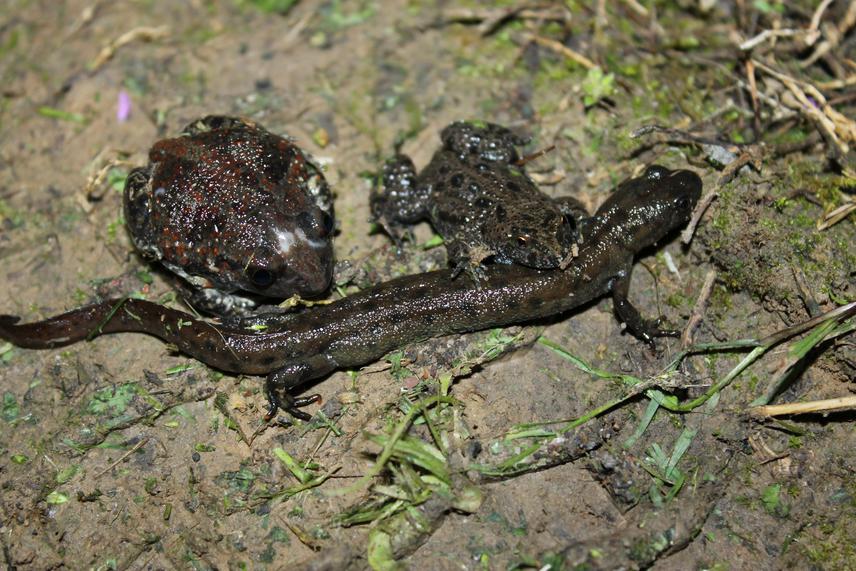Social media video featuring the project.
Living on Cultivated Surfaces: The Importance of Amphibian Species in Agroecosystems
23 Mar 2017 Semberija, Bosnia and Herzegovina, Europe Amphibians | Biodiversity
Assessing the Distribution and Conservation Status of the Pannonian Crested Newt, Triturus dobrogicus ssp. macrosoma, in Bosnia and Herzegovina
As the focus of conservation biology moves from protection of species and habitats to the protection of the most important functional ecosystem services we developed this project that will protect functional ecological services that provide amphibians in anthropogenic habitats. Through education we will try to raise the awareness on the importance of amphibians in agroecosystems and promote these organisms as a solution for pest management control with the final aim to reduce the use of chemical substances and increase the number of individuals in populations of endangered lowland amphibians species in B&H such as: Triturus dobrogicus, Pelobates fuscus, Bombina spp.

Pelobates fuscus, Bombina bombina and Triturus dobrogicus.
Agricultural surfaces occupy large territory of Bosnia and Herzegovina (B&H) as they play an important role in the state economy. The most important fact, in the biological aspect, is that they represent a biotope for many animal species which are under constant anthropogenic pressures. The biggest anthropogenic impact in agricultural ecosystems of B&H is the intensive use of different types of chemicals (e.g. pesticides, insecticides) which significantly decrease biodiversity, disrupt, and contaminate food webs. Amphibians are under the greatest impact of this anthropogenic pressure because chemical contamination induce body malformations through genetic defects in the embryogenesis. Malformations impair mobility and individuals usually do not survive to adulthood. Chemical effects on agroecosystems also reduce the number of invertebrates that represents the basis of amphibians’ diet. These chemicals have contradictory effect: The target species (pests) should be destroyed by this action but often survive and subsequently their population are increased due to reduction of competition, reduction of the number of their predators, and developed chemical resistance.
A major topic in our long-term study on amphibians is their role in food webs (role as predators and prey) in agroecosystems. Results of diet study will show us the presence and quantity of insects considered in agriculture as pest species in the diet of target amphibian species. These data will be used to model the importance of amphibians in regulating food webs (biomass transformation) and the evidence of pest presence would be used as proposal for integrating amphibians in pest management control in future maintenance of agroecosystems. As we promote amphibians as a solution in Integrated pest management (IPM) systems we will preserve arable lands by reducing the harmful anthropogenic impact that will protect all species found in these areas and strengthen/increase the population trend and expand food chain in zoocenosis. The most important outcome will be the education of local people (primarily farmers) in this matter, which leads to increased awareness of the importance of amphibians as friendly species in agriculture ecosystems.
Lowland areas show the greatest diversity of species of amphibians in B&H - 11 species (50% of total existing species in B&H that needs to be protected (Zimić et al., 2015). The study of amphibians in B&H are neglected, especially when it comes to ecological researches. These field studies will once again strengthen herpetological research in B&H.
Social media video featuring the project.
Living on Cultivated Surfaces: The Importance of Amphibian Species in Agroecosystems